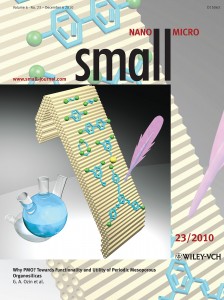 | Writing on the pore wall with a synthetic quill is the idea illustrated in the cover image. This idea captures the role of creative materials chemistry in the development of a novel class of materials called periodic mesoporous organosilica (PMO) since its inception a decade ago. Through the fusion of organic chemistry and inorganic materials chemistry, PMO has grown to possess a variety of new and exciting compositions, properties, and functions. Through a handful of recent trendsetting case histories, the cross-disciplinary applications of PMO in chemistry and physics, materials science and engineering, biology, and medicine are demonstrated in a most powerful way. In doing so, the Review that this image features aims to inspire more collaborative and ambitious endeavors in the second decade of PMO research. Link. |
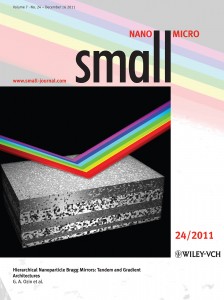 | The cover picture shows a new kind of broadband optical reflector made by bottom-up self-assembly of nanoparticle metal-oxide multilayers fashioned as hierarchical nanoporous tandem and gradient Bragg mirrors. The optical properties of this genre of Bragg mirror can be passively tuned through variations of the composition of the nanoparticle metal-oxide layers and actively tuned through reversible adsorption–desorption of different molecular species in the nanopores, thereby providing myriad opportunities for the management of light in solar cells, photocatalysts, and photonic nose sensors in novel ways. Link. |
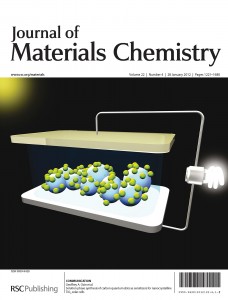 | There is no descriptor for this cover. The image is designed for the paper titled "Solution phase synthesis of carbon quantum dots as sensitizers for nanocrystalline TiO2 solar cells". The abstract of the paper reads: A facile solution phase method for the preparation of carbon quantum dots (CQDs) via dehydration of the molecular precursor γ-butyrolactone was described. A preliminary investigation of the use of CQDs as sensitizers for nanocrystalline TiO2 was also carried out. Link. |
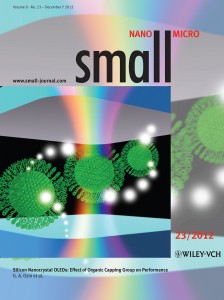 | Pictured is an abstract graphic of a light emitting diode (LED) in which the electroluminescent layer comprises allylbenzene-capped silicon nanocrystals. The use of short aromatic ligands and size-selective precipitation purification methods by G. A. Ozin and co-workers on page 3647 result in superior packing density, enhanced charge transport, and an improved photoluminescence absolute quantum yield of the silicon nanocrystals in the active layer of the LED—a step towards ‘greener’ quantum dot devices. Link. |
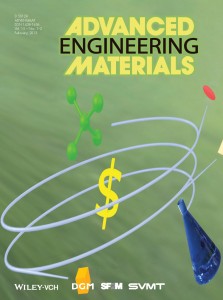 | These days nanotechnology start-ups are emerging with increasing frequency in almost every country around the globe, indicating that attitudes towards entrepreneurship are undergoing a significant change. Innovation in nanotechnology often springs from ideas birthed in universities yet the mindset of stakeholders towards entrepreneurship in our seats of knowledge is vastly underappreciated. In this article the challenges faced by academics and students are explored when confronted with the collision between fundamental research in the pursuit of knowledge and applied research directed at the creation of inventions, intellectual property, companies, jobs, products and wealth. Link. |
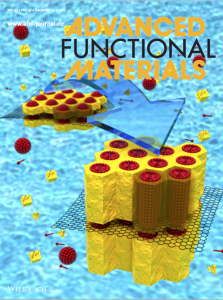 | In article number 1704066, Zheng-Ming Wang and co-workers report a sandwich-type nanocomposite of reduced graphene oxide and periodic mesoporous silica in which mesochannels of silica are vertically aligned toward graphene layers and mesochannel depth and size become tunable. Deep insights into the formation mode are obtained by high photon flux small angle X-ray scattering technique and zeta potential-based solution chemistry. Link. |